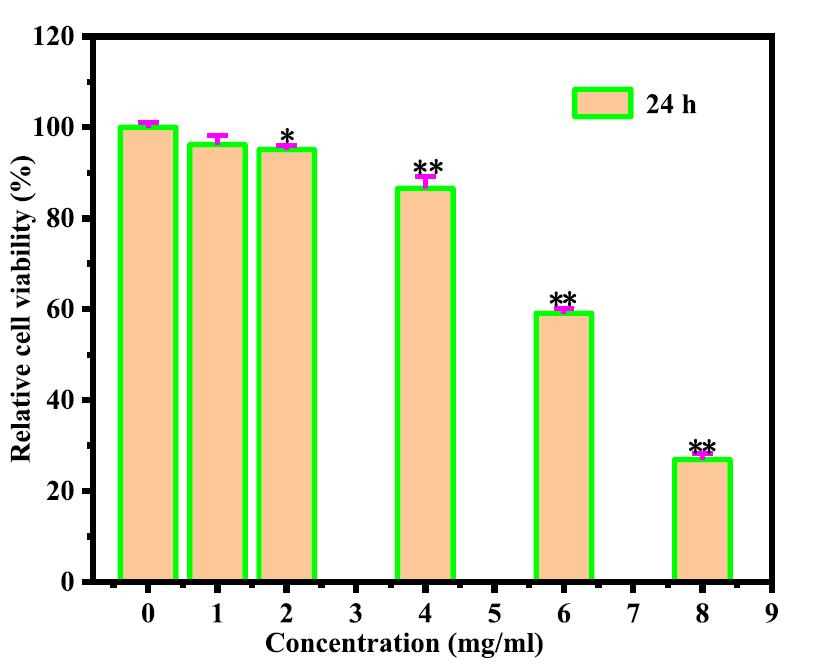NIR-II fluorescence imaging has longer excitation wavelengths and emission wavelengths (1000 nm–1700 nm), which can significantly reduce the light scattering rate and improve the depth of penetration in organisms [1,2]. Moreover, NIR-II fluorescence also has the advantages of low auto-fluorescence effect and high resolution [3,4]. However, only very few NIR-II fluorescence imaging materials can meet the current requirements of in vivo imaging, such as single-walled carbon nanotubes and carbon dots (low fluorescence quantum yield) [5], organic dyes (poor photo-stability) [6] and quantum dots (high toxicity) [7] etc. All of these materials are unable to be clinically applied due to their own defects. However, rare-earth NIR-II imaging materials have long fluorescence lifetime, low auto-fluorescence, high imaging signal-to-noise ratio, deep tissue penetration ability (5–20 mm), and low toxicity, which have a broad application prospect in the field of cancer diagnosis and treatment [8]. So far, the main activator rare-earth ions emitted in NIR II are Nd3+ (1060/1300 nm), Tm3+ (1470 nm), Pr3+ (1310 nm), Ho3+ (1185 nm) and Er3+ (1525 nm) [9]. For example, literature [[10], [11], [12], [13], [14]] reported that the MLnF4 (M = Na, Li; Ln = Gd, Dy, Er, Ce, Nd) luminescent nanoparticles with co-doped or mono-doped Nd3+, Tm3+, Pr3+, Ho3+ and Er3+ ions could be used as a NIR-II fluorescent probe under the excitation at 808 or 980 nm. LaF3 [15], MF2 (M = Sr, Ca) [16], GdPO4 [17], and CaS [18] luminescent nanoparticles with co-doped or mono-doped Nd3+, Tm3+, Pr3+, Ho3+, and Er3+ ions can also be used for NIR-II fluorescence imaging under 808 or 980 nm excitation in vivo, which has potential applications in tumor diagnosis and treatment. In addition, the rare-earth up-conversion luminescence requires only a low power density NIR laser (808 or 980 nm), which is low cost and more universality compared to two-photon laser excitation with high power density [19]. Among them, 808 nm is not easily absorbed by water compared to 980 nm, its absorption coefficient is only 0.023 cm−1, [19]. According to the photon transmission theory, when the light at 808 nm is irradiated on the biological tissue, the absorption of the tissue surface is very small, and the light can penetrate the deeper biological tissue. And the volume effect of light at 808 nm is large, making the biological tissue easier to solidify (the stronger the hemostatic function) [19]. Therefore, it is more suitable for the imaging field of vascular-rich deep biological tissue. More importantly, the NIR-excited rare earth nanoparticles have the tunable up- and down-conversion luminescence property, which can emit the broad-wave multiple emissions from ultraviolet/visible (UV/Vis) to NIR-II, making them ideal fluorescent probes [20]. However, the currently reported up-and down-convertion emission materials based on a single activator inhibit up-conversion luminescence efficiency and NIR-II luminescence efficiency.
Based on the above research status, a novel CeF3:Tm3+, Er3+ NIR up-down conversion luminescent materials with strong visible and NIR-II luminescence have been synthetized by direct precipitation and hydrothermal methods (Fig. 1). Firstly, the effects of different preparation methods and reaction conditions on the structure, morphology and luminescence properties of CeF3:Tm3+, Er3+ NIR up-down conversion luminescent nanoparticles were investigated. Then, the surface of CeF3:Tm3+, Er3+ nanoparticles modified by polyethylene glycol (PEG) and lysine (Lys). The effects of surface modifiers on the hydration particle size, zeta potential, luminescence properties were investigated in aqueous solutions with different pH values. Finally, the thermal stability and biocompatibility properties of CeF3:Tm3+, Er3+ NIR up-down conversion luminescent nanoparticles were investigated.
Compared with the reported research work [[30], [31], [32], [33], [34], [35]], the highlights of this research work are as follows: (1) Novel CeF3:Tm3+, Er3+ up-down conversion luminescent nanoparticles with small size and high stability were synthesized by direct precipitation and hydrothermal methods. Novel CeF3:Tm3+, Er3+ up-down conversion luminescent nanoparticles successfully combined advantage of the narrow emission peak of visible fluorescence with the deep tissue penetration advantage of NIR-II. (2) The influence of the preparation method and experiment condition of novel CeF3:Tm3+, Er3+up-down conversion luminescent nanoparticles on the luminescence performance was systematically studied, and the optimal preparation conditions were determined. (3) The influence and mechanism of surface modification on the dispersion stability and luminescence properties in different aqueous solutions (pH = 5–7) of novel CeF3:Tm3+, Er3+ up-down conversion luminescent nanoparticles were studied. (4) It reveals the influence mechanism of the surface modification and temperature change of novel CeF3:Tm3+, Er3+ up-down conversion luminescent nanoparticles on up-down conversion luminescent property.
The preparation and investigations on NIR up-down conversion luminescence properties of Novel CeF3:Tm3+, Er3+ nanoparticles with small size, high stability, biocompatibility and strong luminescence (visible and NIR-II emission) is expected to provide a practical innovative idea for the development of high-performance rare-earth NIR up-down conversion luminescence materials, therefore, it has important practical significance and research value.
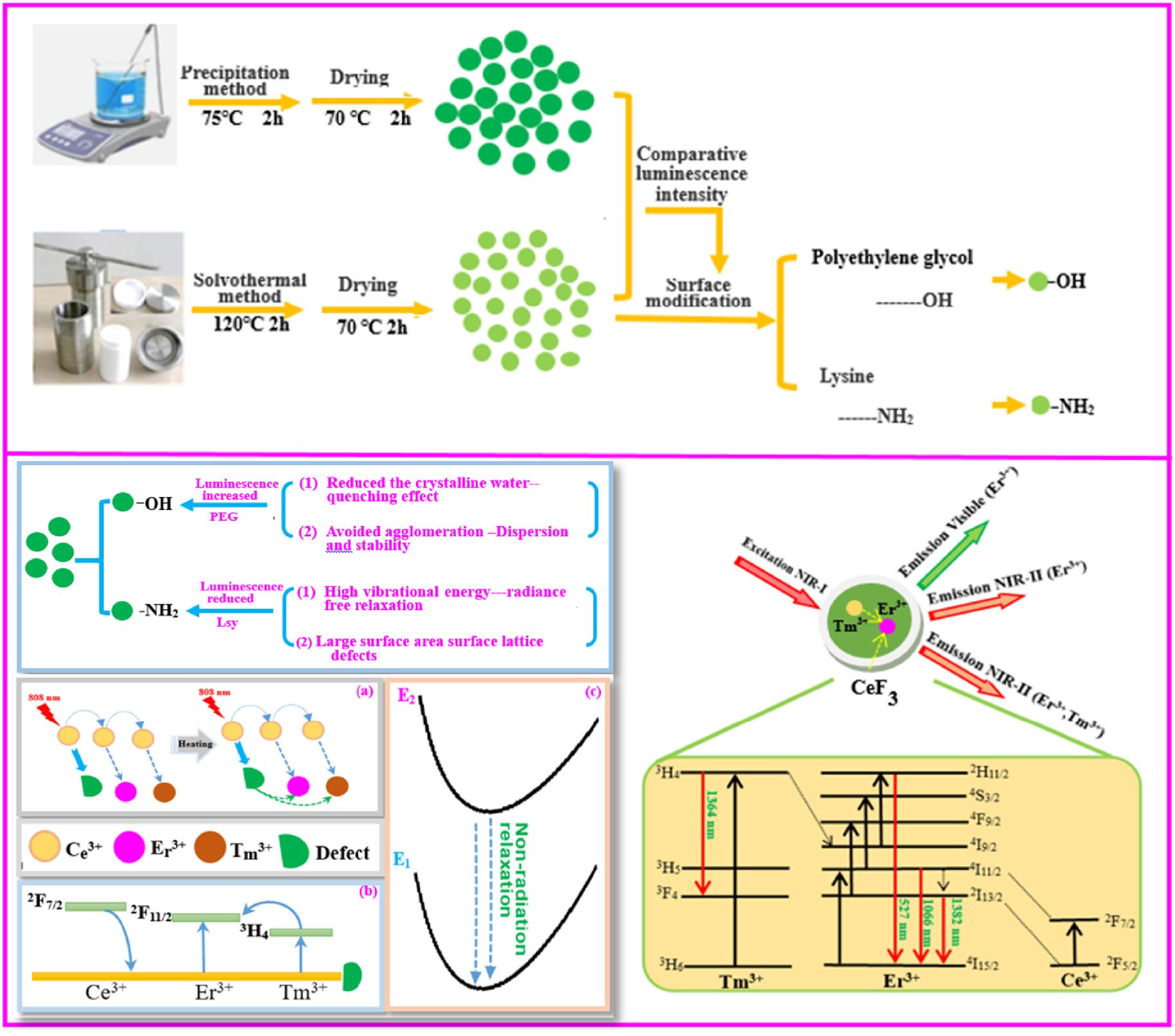
Fig. 1. Schematic diagram of synthesis and luminescent property of novel CeF3:Tm3+, Er3+ NIR up-down conversion nanoparticles: (a) Negative heat quenching
mechanism, (b) Defects capture and release electrons in the crystals, (c) Multi-assisted non-radiative relaxation.

Fig. 2. XRD patterns of CeF3:Tm3+, Er3+ nanoparticles produced by hydrothermal method (a) and direct precipitation method (b).
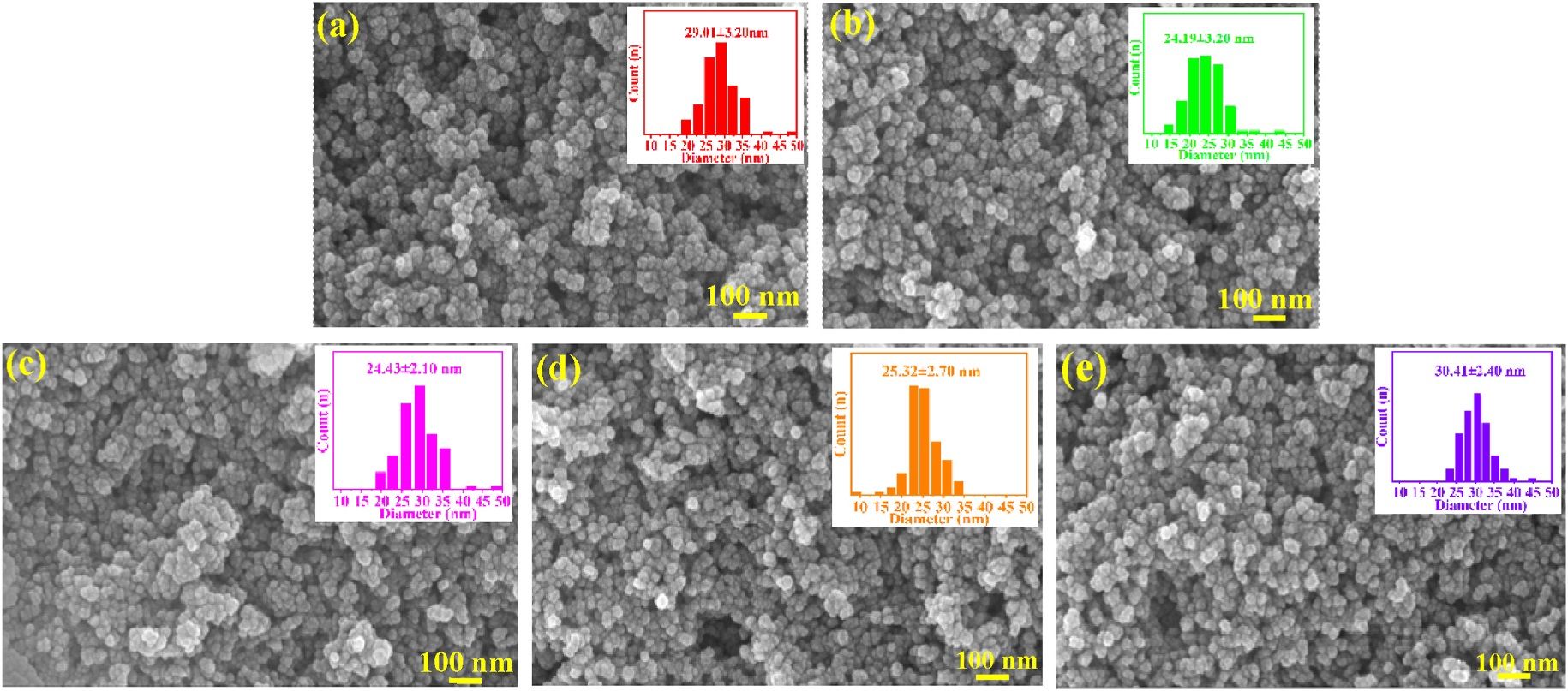
Fig. 3. SEM images of CeF3:Tm3+,Er3+ nanoparticles obtained by hydrothermal method. (a-2 h) (b-4 h) (c-6 h) (d-8 h) (e 10 h).

Fig. 4. SEM images of CeF3:Tm3+, Er3+ nanoparticles obtained by direct precipitation method (a-S1) (b-S2) (c-S3) (d-S4) (e-S5).

Fig. 5. Up-down conversion emission spectra of CeF3:Tm3+, Er3+ nanoparticles produced by hydrothermal method.

Fig. 6. Up-down conversion emission spectra of CeF3:Tm3+, Er3+ nanoparticles obtained by direct precipitation method.
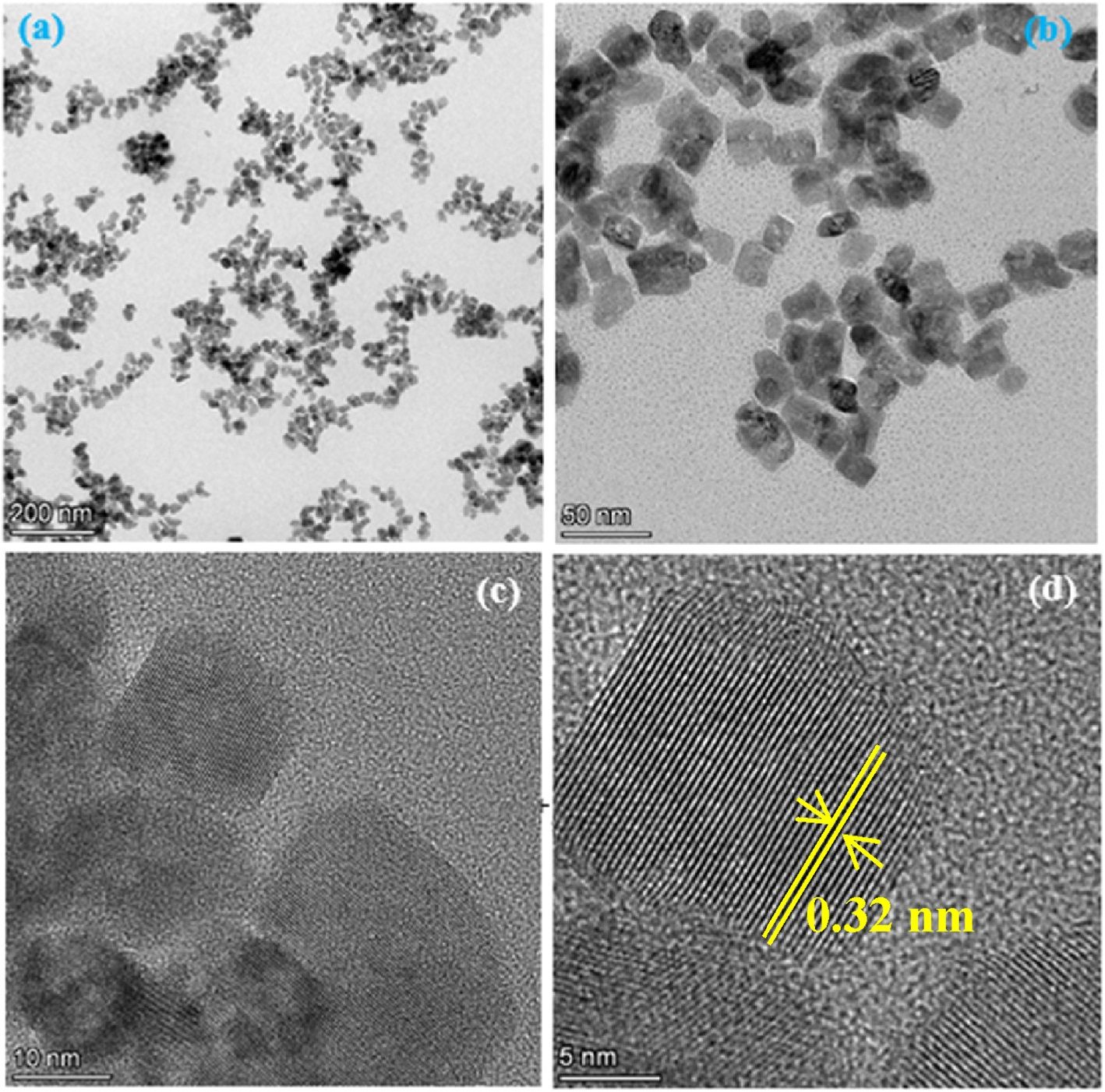
Fig. 7. (a~d) TEM images of CeF3:Tm3+, Er3+ nanoparticles (hydrothermal method, 10 h).
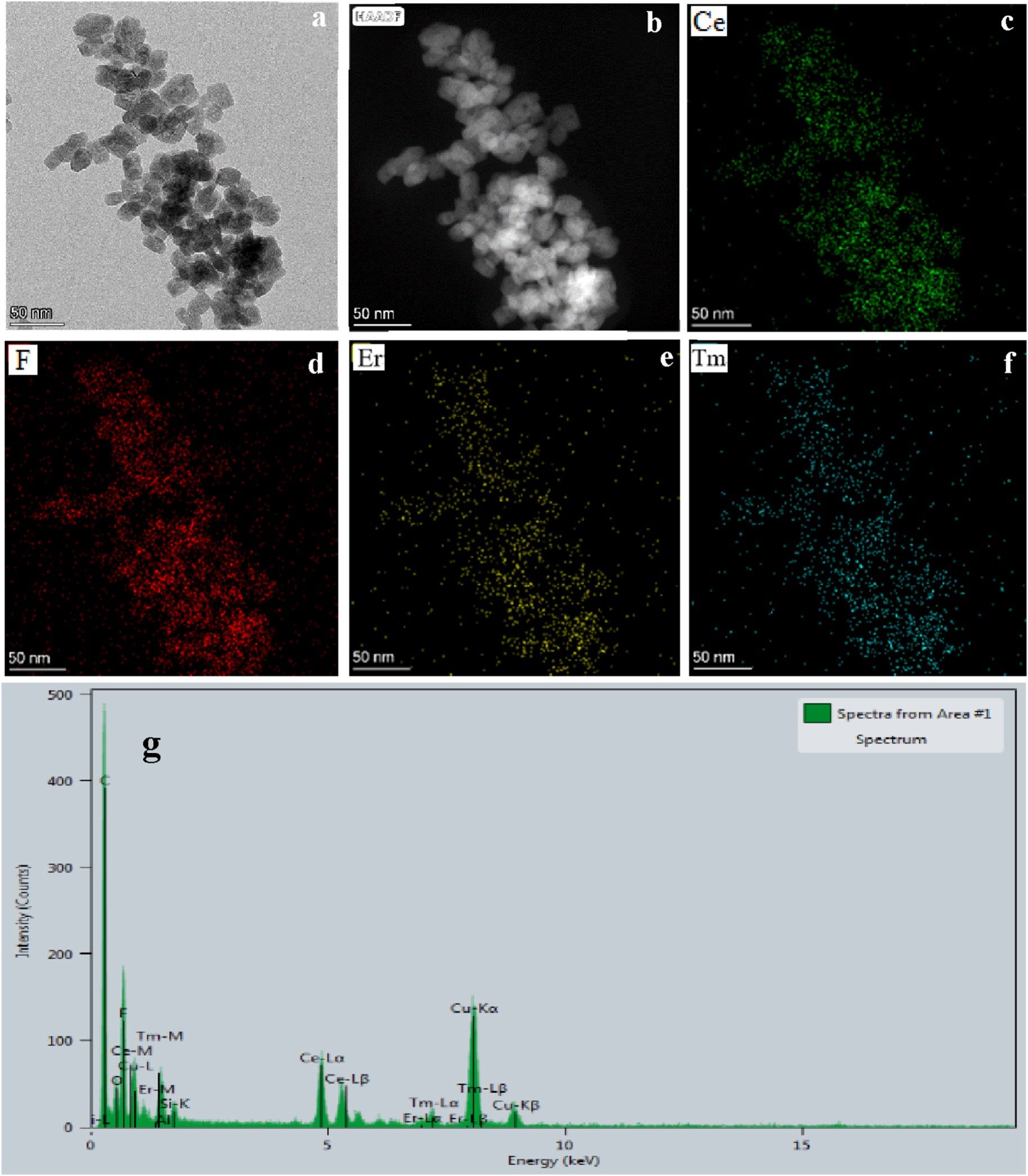
Fig. 8. (a,b) TEM and (c ~ g) Energy Dispersive X-ray (EDX) mapping of CeF3:Tm3+, Er3+ nanoparticles.
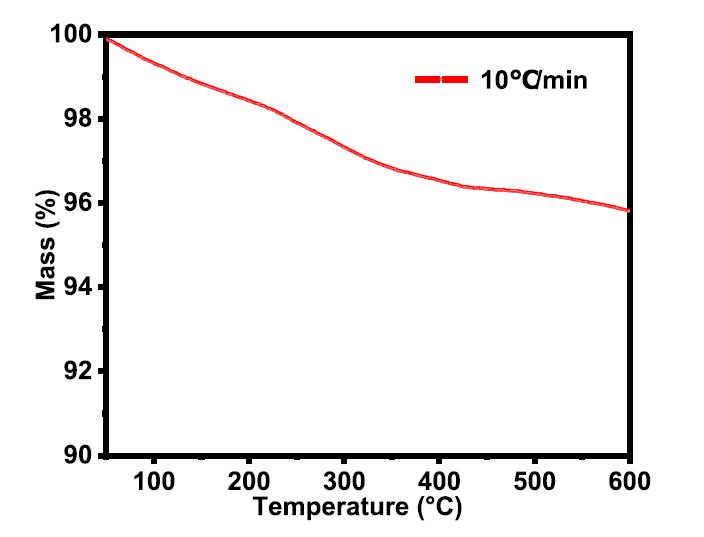
Fig. 9. TG plot of the CeF3:Tm3+, Er3+ nanoparticles.
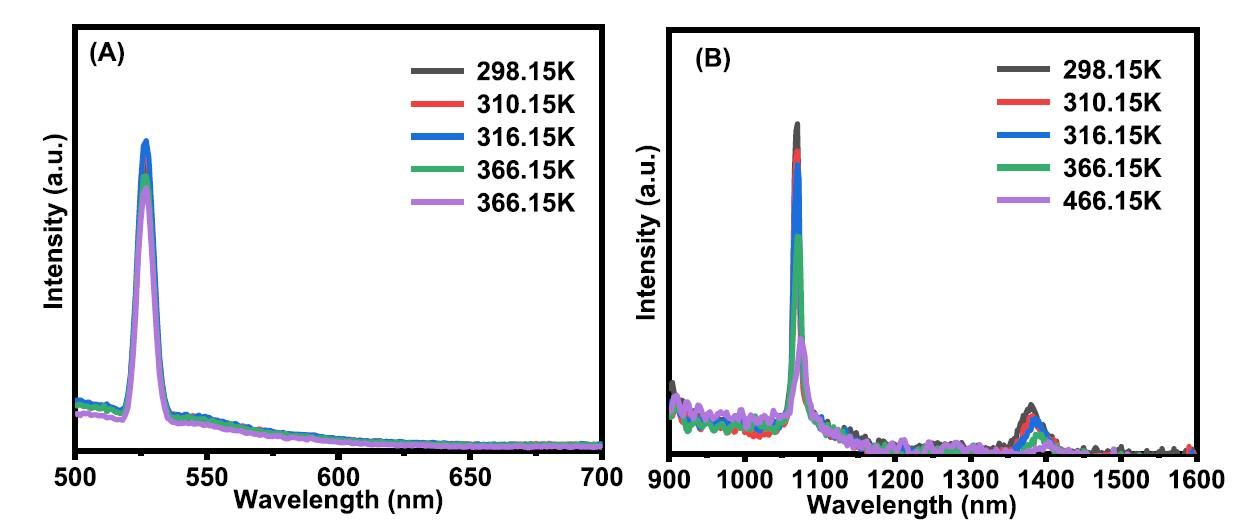
Fig. 10. The temperature stability spectra of CeF3:Tm3+, Er3+ nanoparticles.

Fig. 11. Fluorescent decay curves of 5D0-7F2 (525 nm), 4I15/2 → 4I11/2 (1066 nm) and 4I15/2 → 4I13/2 (1386 nm) for Er3+.
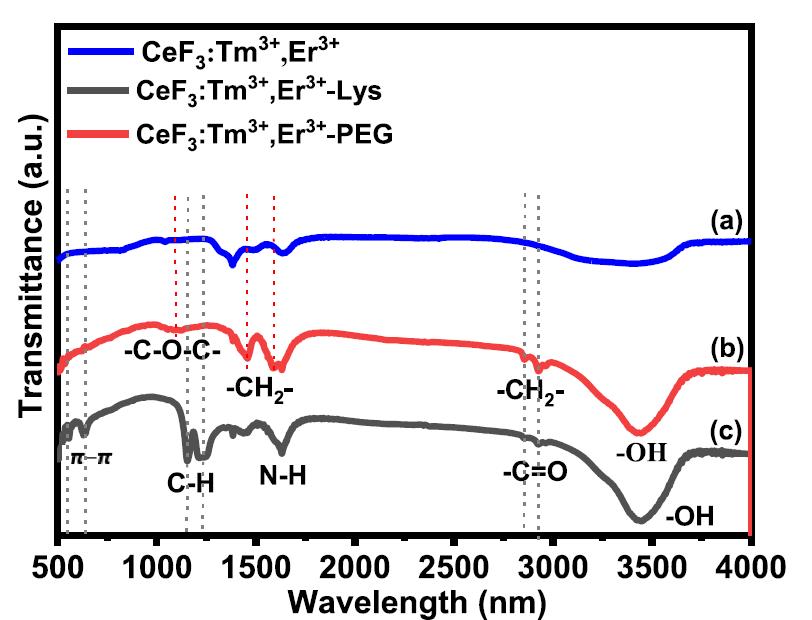
Fig. 12. The infrared spectra of CeF3:Tm3+, Er3+, CeF3:Tm3+, Er3+-Lys and CeF3:Tm3+, Er3+-PEG nanoparticles.
Table

Fig. 13. Up-down conversion fluorescence spectra of CeF3:Tm3+, Er3+, CeF3: Tm3+, Er3+-PEG and CeF3:Tm3+, Er3+-Lys nanoparticles.

Fig. 14. Up- and down-conversion emission spectra of CeF3:Tm3+, Er3+-PEG nanoparticles in aqueous solutions (pH = 5, 6, 7).
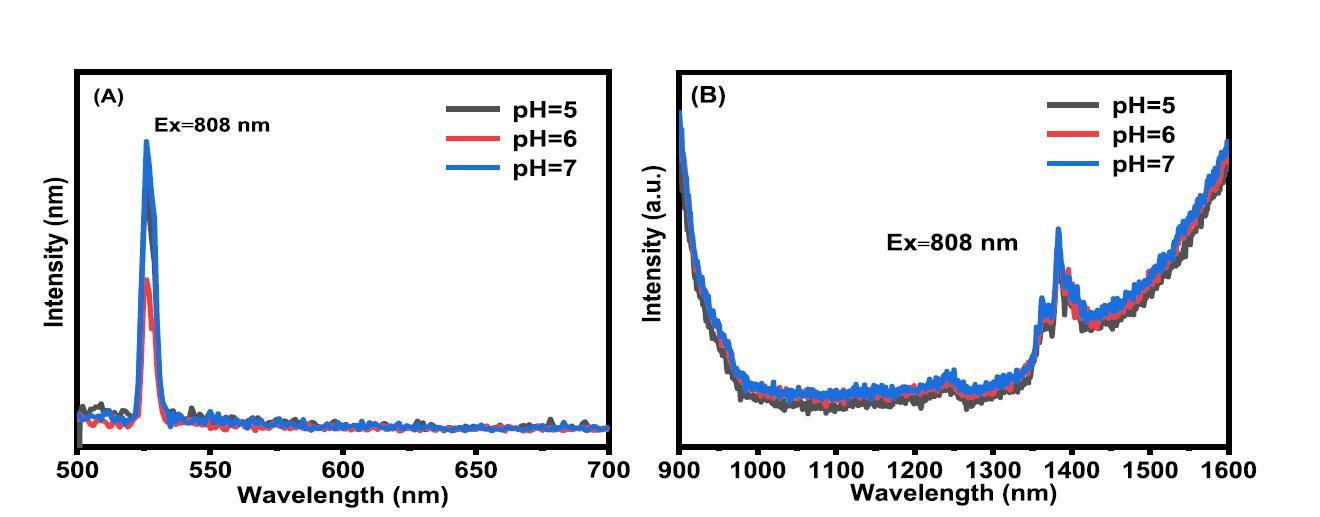
Fig. 15. Cell viability of HeLa cells treated with different concentrations of CeF3:Tm3+,Er3+-PEG nanoparticles at 24 h (0 mg/ml is Control group, *P < 0.05, **P < 0.01).
